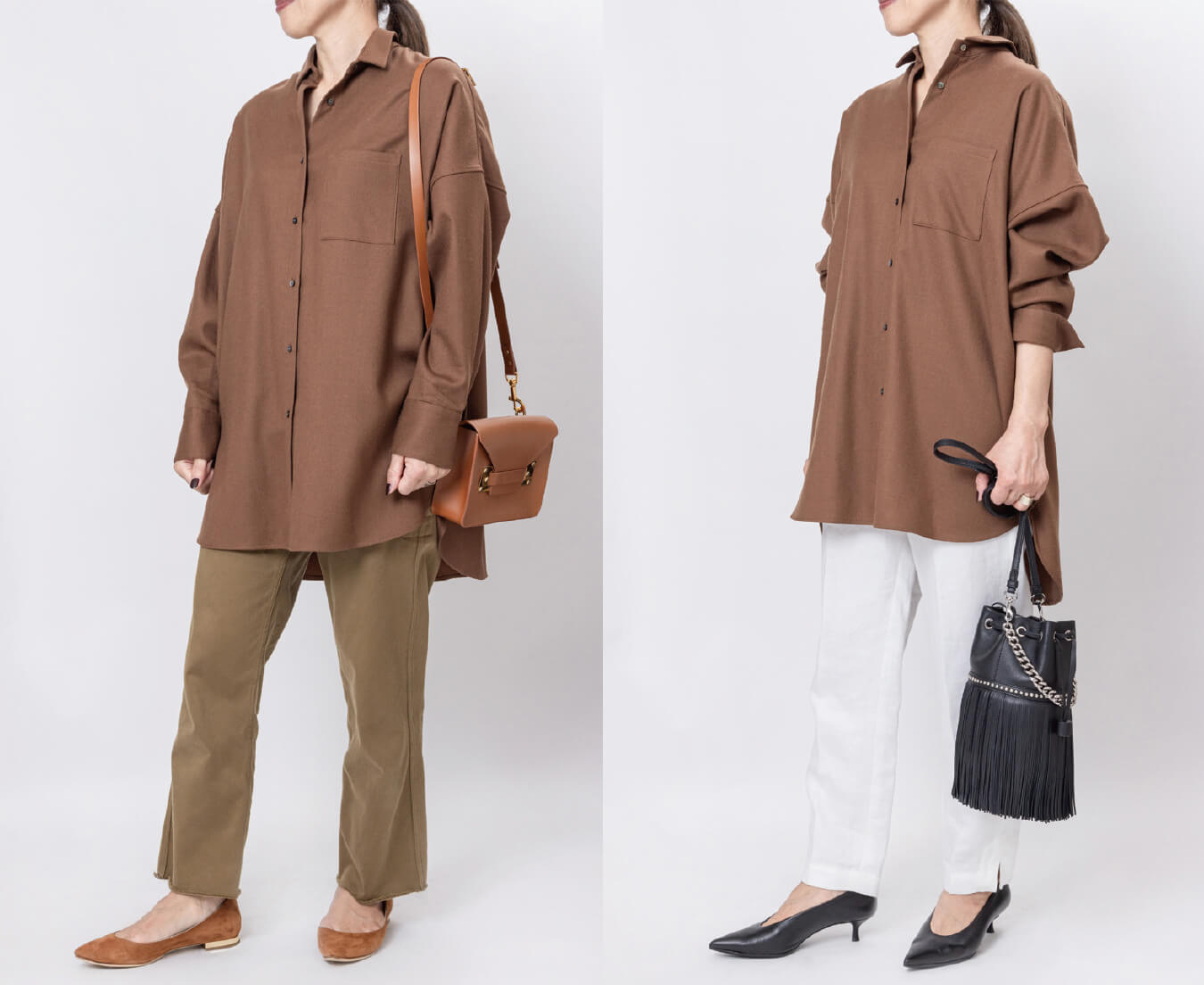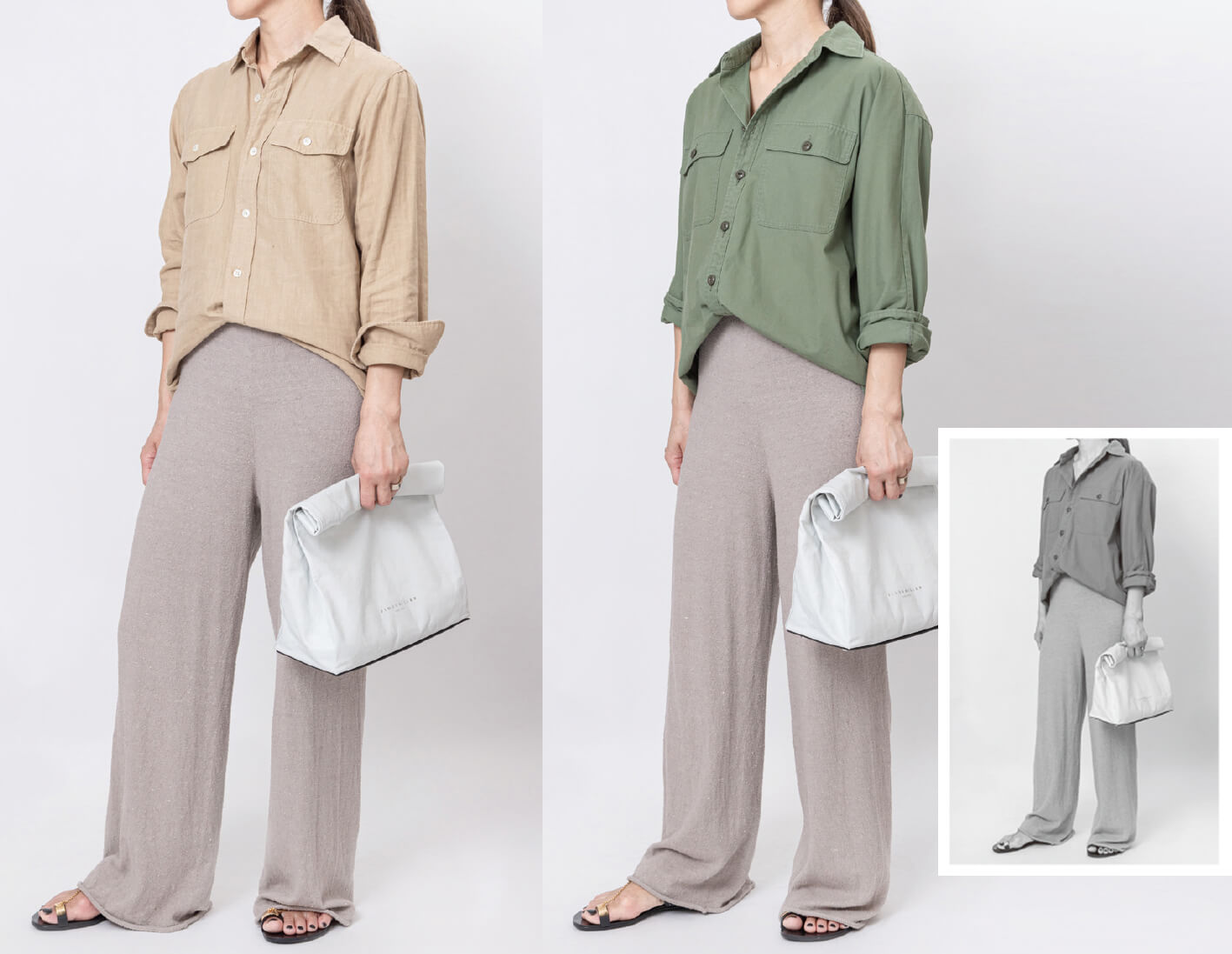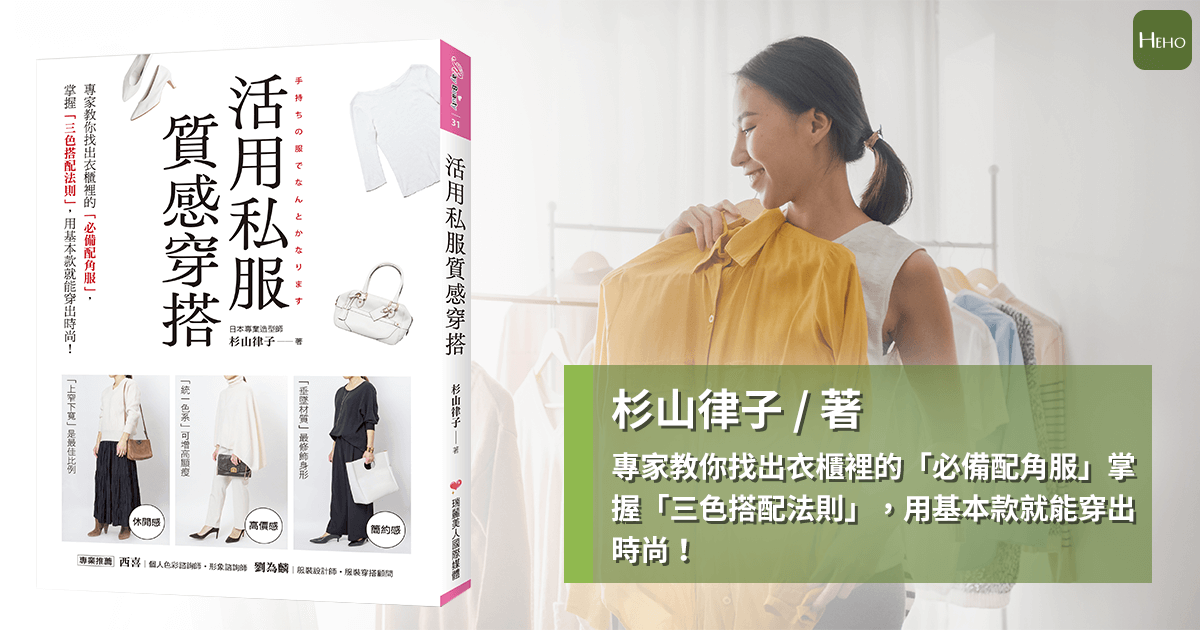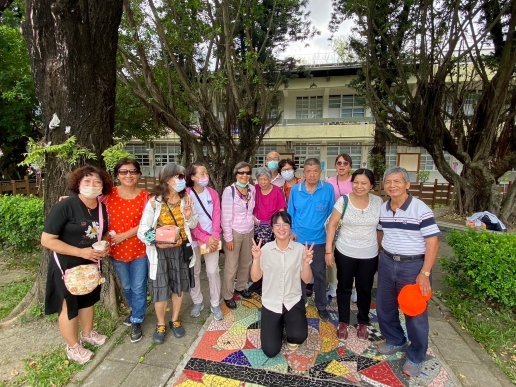Humans have a better ability to recognize colors than shapes. This principle also applies to clothing; colors are more noticeable and eye-catching than designs. In other words, the impression you give can be greatly influenced by your choice of colors. Therefore, it's recommended not to add too many colors to your outfit, especially when you're in a rush in the morning. (Left) NG: Mismatched Tone Outfit (Right) OK: "Relaxing Color + Intermediate Color + Shrinking Color" Combination. (Photo/Heho Health)
(Left) NG: Mismatched Tone Outfit (Right) OK: "Relaxing Color + Intermediate Color + Shrinking Color" Combination. (Photo/Heho Health)
Instantly Perfect "Color Rules"
There are about 10 basic colors, which can be divided into three categories:
- Relaxing Colors: white, off-white, ivory, linen (wood color), ice gray
- Intermediate Colors: gray, beige, taupe, army green, brushed denim
- Constricting Colors: black, navy blue, charcoal gray, dark brown, non-brushed denim
Relaxing colors bring out a sense of relaxation or brightness, eliminating dullness in the skin and preventing a monotonous look, creating a youthful impression. Intermediate colors easily blend with other colors, giving a soft impression, and are also called harmonizing colors. Constricting colors have a strong slimming effect.  Using a black-and-white photo to observe the differences in depth, you can achieve a successful "intermediate color matching" outfit. (Photo/Heho Health)
Using a black-and-white photo to observe the differences in depth, you can achieve a successful "intermediate color matching" outfit. (Photo/Heho Health)
How to Match Colors
The simplest method is to choose one item from each of the relaxing, intermediate, and constricting colors, keeping the total number of colors in your outfit within three, or even just two. Using similar colors increases the difficulty of matching, and having too many colors makes it harder to create a cohesive look.
How to Avoid the "Old Fashion" Look
One of the most challenging ways to dress is by using similar colors. Especially combining intermediate colors can look very monotonous, making you appear older and more casual. For example, pairing a gray top with beige bottoms is a classic "old fashion" combo.
These colors may seem like a zero-fail combination, but due to the color tones, they look dull and lackluster. If you have doubts about your outfit, take a black-and-white photo with your phone. If the colors look the same in the photo (same shades), then the color scheme is generally not good. If there is a strong contrast in shades, even in black-and-white, it's a successful match.
Monochromatic Outfits Are Not Always Fashionable
Colors have different saturations and brightness. Even the same gray can be subdivided into "blue-tinted gray," "colorless gray," etc. Although they look similar, their tones are entirely different. Combining these colors can be very risky.
Monochromatic outfits should be matched with the same tones and shades, also known as gradient matching, which can showcase fashion sense and a high-end feel. Most stylists also use "tones" to calculate colors when deciding on clothing combinations.
The key to not failing in dressing is to keep the number of colors within three. If the tones are different, your outfit may unintentionally use too many colors, giving a visually uncoordinated impression. Instead, use relaxing, intermediate, and constricting colors to combine your outfits easily, making you look more beautiful.







